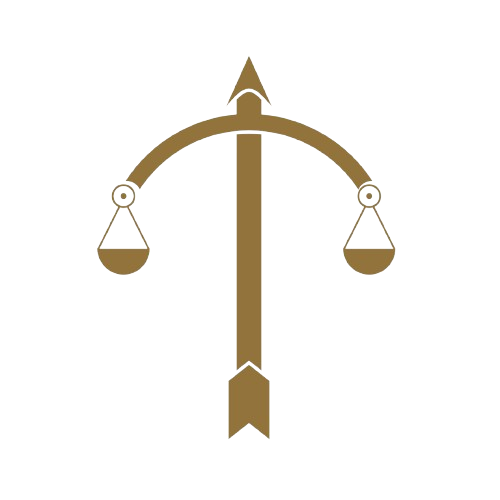The Meaning of “Proportionality”- How Courts Balance Rights in a Polarised World
“Proportionality” has quietly become one of the most important ideas in modern law. From free speech and data privacy to environmental regulation and national security, judges across the world use this doctrine to decide when rights can be limited and when the state has gone too far. But what does it really mean to be proportionate, and why does this idea matter more than ever in a divided age?
At its simplest, proportionality is the idea that power must be exercised in a way that fits the goal. The state can restrict a right, but only as much as is necessary to achieve a legitimate purpose. It is a principle of moderation — a safeguard against excess.
The test appears deceptively simple: if the government’s aim is valid, its actions must be suitable to achieve that aim, necessary in the sense that no less intrusive measure would suffice, and balanced so that the harm to rights is not greater than the benefit to society.
That three- or four-part structure, developed in German and Canadian constitutional law, now underpins human rights adjudication across Europe and beyond. Proportionality has become the grammar of judicial reasoning.
From Germany to the world
The modern concept began in post-war Germany, where the Bundesverfassungsgericht, the Federal Constitutional Court, developed proportionality as a way to limit state power under the Basic Law. It soon spread across Europe through the European Convention on Human Rights and into the jurisprudence of the European Court of Human Rights (ECHR).
When the United Kingdom incorporated the Convention through the Human Rights Act 1998, proportionality became a central tool for balancing competing rights. It was later adopted in Canada, New Zealand, South Africa, and even the European Union’s own Charter of Fundamental Rights.
The appeal of proportionality lies in its universality. It does not tell judges what to decide, but how to decide, by reasoning in a structured, transparent way that acknowledges both individual rights and collective needs.
Balancing in practice
Proportionality is most visible in cases where rights collide. Privacy versus press freedom, public health versus liberty, climate policy versus property rights — all require courts to weigh values that cannot easily be reconciled.
Consider the ECHR’s rulings on surveillance. The Court accepts that states may intercept communications for national security but insists on safeguards: targeted rather than mass collection, judicial oversight, and data-retention limits. The aim (security) is legitimate, but the means must remain proportionate.
During the COVID-19 pandemic, courts across Europe and Latin America used proportionality to review lockdowns, vaccine mandates, and emergency powers. Most upheld the measures but stressed that they must be temporary and evidence-based. Even in crisis, proportionality demanded justification.
The UK approach
British judges have gradually embraced the doctrine. In Bank Mellat v HM Treasury (No 2) (2013), the Supreme Court set out a four-stage proportionality test: (1) is the objective sufficiently important, (2) are the measures rationally connected to it, (3) could a less intrusive measure achieve the same result, and (4) does the benefit outweigh the harm?
Although the UK traditionally relied on the softer test of “reasonableness” from Associated Provincial Picture Houses v Wednesbury Corporation (1948), proportionality offers a more precise tool for rights analysis. It allows courts to ask not just whether a decision was lawful, but whether it was fair, necessary, and balanced in substance.
A doctrine of democracy, not activism
Critics often accuse proportionality of inviting judicial activism — letting unelected judges decide moral and political questions. Yet defenders argue that it actually reinforces democracy by forcing governments to explain themselves.
A proportionality judgment does not tell ministers what policy to adopt; it asks them to justify why their chosen policy is the least restrictive means available. It demands reasoning, not ideology. In that sense, proportionality keeps public power accountable to reason rather than rhetoric.
Proportionality beyond rights
The idea now reaches far beyond human rights. It guides administrative and regulatory law, shaping decisions on planning, immigration, and competition policy. The EU Court of Justice routinely uses proportionality to review whether European legislation goes beyond what is necessary to achieve its objectives.
Environmental litigation increasingly turns on proportionality as well. In climate-related cases, courts examine whether governments have taken reasonable and balanced steps to meet emissions targets without imposing disproportionate burdens on specific groups. The principle has become the common language of fairness across disciplines.
Proportionality in a polarised world
In an age of cultural division and online outrage, proportionality feels almost countercultural. It requires judges to slow down, to weigh competing claims with nuance, and to recognise that both sides may hold legitimate concerns. That kind of reasoning is difficult in politics but essential in law.
The doctrine’s flexibility is its strength, but also its vulnerability. Because it depends on judicial judgment, not mechanical rules, its application varies from court to court. A judge’s sense of what is “necessary” or “proportionate” will inevitably reflect their own values and social context. This makes transparency in reasoning crucial; proportionality only works if it is applied openly and consistently.
Lessons from across the globe
Different jurisdictions have refined the concept in their own ways. The Canadian Supreme Court’s Oakes test, named after R v Oakes (1986), requires that limits on rights be prescribed by law, pursue a pressing objective, and be proportional in means. The South African Constitutional Court applies a similar test but explicitly includes the broader context of equality and dignity.
In Israel, proportionality has become the fulcrum of constitutional conflict, used by the Supreme Court to review controversial government policies. The political backlash there shows both the power and the peril of giving judges a principle flexible enough to measure fairness itself.
Proportionality has become the quiet engine of modern constitutionalism. It allows courts to navigate moral gray zones without claiming moral superiority. By demanding evidence, reasoning, and balance, it turns law into a disciplined conversation between power and rights.
In a polarised world, that conversation matters more than ever. Proportionality reminds governments that necessity is not the same as convenience, and it reminds citizens that rights, however fundamental, live in relation to one another. Fairness, like freedom, needs structure — and proportionality provides it.
The Legal Integrity Project Editorial Team

